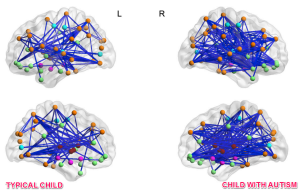Human-Computer Interaction… I thought this blog was about psychology?
Over the course of a typical day, how often do you interact with computers? How are you reading this post? You might be reading this blog on your tablet, music playing through headphones connected to the smartphone in your pocket, as you sit on a computer-controlled train headed to school. Once there, you might sit in a computer lab to access a web-based library information system to find research for your final presentation. Perhaps you scanned a monthly pass to activate the turnstile and board the train for your commute? Maybe you printed several journal articles from an online database, or photocopied a chapter from a book to reference later for your research paper?
In a typical day, many devices require some form of interaction from the user in order to help carry out desired tasks; whether swiping an access card, pressing an icon on a touchscreen, pushing a button on a copier, or moving a pointing device across a screen. Ideally these devices perform their functions effectively and with ease for the user. But how many times have you sit in front of a screen—a computer, a copier, your phone—annoyed and frustrated? More often than not, users have problems understanding and operating these devices, making tasks undesirable, or perhaps impossible. The more complex the task, the more complex the system. The more complex the system, the greater need to focus on user interaction.
The field of Human-Computer Interaction (HCI) focuses on improving the usability of systems and applications though analysis and design [1]. But what does HCI have to do with psychology?
The Psychology of Human-Computer Interaction
HCI is an interdisciplinary field involving the study, design, planning, evaluation, and implementation of interactive computer systems[2]; it is an intersection of technology, computer science, information systems, graphic and industrial design, human factors, sociology, behavioral science and cognitive psychology[3]. HCI applies aspects of each field to the entire system: the device, the interface, the context and the user.
An important aspect of HCI considers the potential behavior of user, and covers many aspects of cognition. HCI attempts to optimizes the relationship between user interpretations and the intent of the design and functions of the interface. The field attempts to minimize incorrect interpretations, and ease interaction though the analysis of a user’s perceptions, attention, memory, learning process, communications, problem solving and decision making. These are interdependent processes. Related cognitive research and knowledge has helped guide the design of computers and their interfaces in numerous ways[2]. Exploring these different processes will help to paint a picture of how they influence HCI.
PERCEPTION
Perception is the way in which a person interprets and understands their environment through sensory information (vision, audition, touch, etc.). Perception allows a user to see, hear, and feel when using computer interfaces. In addition, how we intend information to be perceived by a user is affected the way in which it’s presented: typography, legibility, color, pattern, objects, proximity, similarity, grouping, etc. augment the users perception. Color, for example, can convey to a user to take caution, or that action is needed – typically, green denotes that all things are fine or to proceed, yellow means to be careful or cautious, and red generally means stop or danger[2].
ATTENTION
Attention allows a person to selectively concentrate and focus on important, relevant information in their environment. Attention assists in information gathering, forming a goal(s), and completing tasks. In HCI, a system’s presentation of information has a direct impact on the attention of the user. For example, structured interfaces with meaningful, ordered layouts allow a user to process information better. The use of color, size, position, and ordering of items can draw the users attention to where it is, or isn’t, needed most. In turn these choices can help reduce operating mistakes and assist the user in performing their tasks[2].
MEMORY
Research into short-term (STM) and long-term (LTM) memory reveals how information is retained and recalled. In general, people are much better at recognition than recall; recall is often limited and far from precise. STM is easy to recall, but temporary and limited, near-present memory. With minimal effort, a person remember tasks, names, faces, and numbers, but can just as easily be forgotten. LTM stores memories and interpretations of the past, such as knowledge, experiences, and feelings. It has a larger capacity for retention, but storing and retrieval requires more exertion[4].
STM and LTM can affect the interaction between a user and computer. Overloading a users’ memory with complicated procedures may, for example, store an unpleasant experience with a particular interface in the users’ LTM. The memory of the experience can create a preconception of that system, and an adversity with its use. STM, for example, may store a recent system alert that was brief and not repeated, but can be easily forgotten if the user is preoccupied with another task.
…
TUNE-IN Next Week for Part 2, to find out how understanding Learning, Communication, & Problem Solving influences HCI, and the overall impact of psychology on interface design!
1 Newell, A., & Card, S. (1985). The Prospects For Psychological Science In Human-Computer Interaction. Human-Computer Interaction, 1(3), 209-242. Retrieved December 2, 2013, from http://dx.doi.org/10.1207/s15327051hci0103_1
2 Preece, J., Rogers, Y., & Sharp, H. (2002). Interaction design: beyond human-computer interaction. New York, NY: J. Wiley & Sons.
3 Jacko, J. A., & Sears, A. (2003). Human-computer interaction. Fundamentals. Mahwah, N.J.: Lawrence Erlbaum Associates.
4 Norman, D. A. (2002). The design of everyday things. New York: Basic Books.
 Send to Kindle
Send to Kindle